K-P police reforms: myth and reality
The last two governments that served the province were of the PTI (2013-2018) and the ANP (2008-2013)

Imran Khan claims to have made KP police 'misali'. PHOTO: EXPRESS/FILE
The last two governments that served the province were of the PTI (2013-2018) and the ANP (2008-2013). I would, therefore, briefly review the nature of reforms introduced by these two governments and the financial injections provided in each of the tenures.
Let us first look at the situation that existed in the country and the K-P province in 2008. The Taliban outfits had established parallel governments in many districts of K-P province and were regularly attacking personnel and premises of the law-enforcement agencies. In such an environment of real and imminent danger, the then provincial ANP government rightly considered revamping and rebuilding of the police department its top priority. It, therefore, developed a “Comprehensive Development Strategy and Post Needs Crisis Assessment Programme” with the assistance of the World Bank. As money makes the mare go, the ANP government enhanced the budget of the police besides increasing its Annual Development Programme. We can notice that financial resource allocation reached its peak in 2010-11 during the ANP’s government. With more finances available, the police force acquired better human resource as the number of police personnel swelled to 75,000 in 2013 from 32,000 in 2006-7, which is a staggering increase of 134 per cent. In order to achieve reforms-related targets, a ‘Project Coordination Unit’ was also established which empowered the police force to initiate and run its developmental schemes.
Besides recruitment, capacity building was another important strategic priority for the-then ANP government. As the existing training centres could not accommodate such huge numbers, arrangements were made in collaboration with the Army for imparting training. Another strategic priority was to raise a counterterrorism force and within a short span of time a highly trained Anti-terrorism Elite Force was raised with 7,000 members. In the same period, a state-of-the art ‘Joint Training Centre’, with the assistance of the US Bureau of International Narcotics and Law Enforcement Affairs, was built in Nowshehra which is now the main training feeder for the anti-terrorism personnel. The Directorate of Counter Terrorism was established which played a crucial role in bringing hundreds of terrorists to justice and in preparing a database of 3,500 militants with 350 of them being the highly wanted terrorists. To improve the physical infrastructure, the damaged buildings of the police in the whole of Malakand were reconstructed under the US-assisted Rule of Law and Peace Building programme. In a nutshell, by 2013, a highly well-developed police system was in place to tackle the law and order situation.
Now let us turn to the 2013-18 period of the PTI government and examine what specific reforms were initiated and executed by this government. PTI leader Imran Khan, in his speeches, and also in the manifesto, had vowed that the Station House Officer (SHO) system would be replaced by the US-styled sheriff system where the SHOs would be elected by the local people. Nothing of such sort came about in the PTI’s era. We, however, did see some pictures being splashed on social media pages of the party showing a model police station on the pattern of police stations in the developed countries to create a perception that the K-P police have been modernised to an extent. The reality on ground is that the buildings of main police stations in Peshawar, let alone smaller cities, are still in dilapidated condition. People, however, did see greater presence of traffic police personnel but that was possible due to the additions made to the police force by the previous government. Therefore, the credit should go to whom it belongs. In the PTI’s tenure, the police force’s strength reached 82,000, thus registering an increase of 9 per cent which dwarfs in comparison with what the ANP government did in its tenure. The ‘Directorate of Counter Terrorism’ was renamed as ‘Counter Terrorism Department’ making it a focal agency against terrorism and thus relieving the police stations. Hence, the main channel of collecting intelligence and interaction with the community was absolved of its duties. The much-needed forensic lab got completely neglected while the safe city project did not either materialise for improving policing in the KP province.
In terms of financial support, we can see from figures that the growth momentum fell sharply and reached its lowest in 2015-2016 during the PTI’s government. Rather than introducing any substantive reforms, a high-pitched and well-organised propaganda was unleashed to create a perception that the previous government had done very little to provide peace and security to the people. The comparative analysis would, however, make it clear that myths can’t stand long when exposed to the light of facts and evidence.
Published in The Express Tribune, July 22nd, 2018.
Like Opinion & Editorial on Facebook, follow @ETOpEd on Twitter to receive all updates on all our daily pieces.

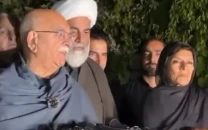
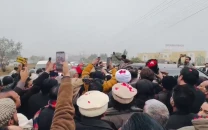
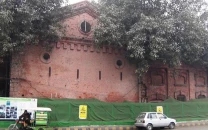
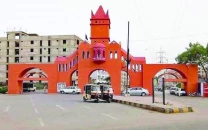
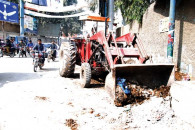
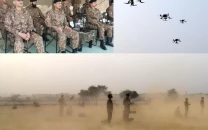












COMMENTS
Comments are moderated and generally will be posted if they are on-topic and not abusive.
For more information, please see our Comments FAQ